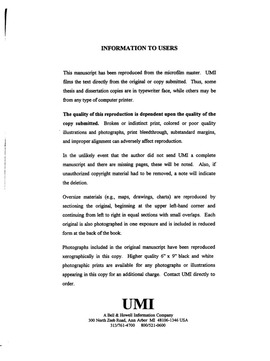| dc.contributor.advisor | Kogan, Yefim, | en_US |
| dc.contributor.advisor | Lamb, Peter, | en_US |
| dc.contributor.author | Ovtchinnikov, Mikhail. | en_US |
| dc.date.accessioned | 2013-08-16T12:29:54Z | |
| dc.date.available | 2013-08-16T12:29:54Z | |
| dc.date.issued | 1997 | en_US |
| dc.identifier.uri | https://hdl.handle.net/11244/5565 | |
| dc.description.abstract | In the case of the New Mexico cumulus cloud, when raindrops are produced through the warm-rain process, the Hallett-Mossop mechanism then generates ice particles in concentrations of order 100 L$\sp{-1}$ in about 10 minutes. The secondary ice crystal production is confirmed to be a likely explanation for the large ice particle concentrations found in New Mexican summertime cumulus. | en_US |
| dc.description.abstract | Sensitivity tests show that when the conditions for the Hallett-Mossop process are met, high concentrations of ice splinters can be produced even when the concentration of primary ice crystals is very low. The efficacy of the rime-splintering mechanism depends strongly on the liquid-phase microphysics, and the presence of drizzle-size drops and their freezing by capture of ice splinters are essential to accelerate the Hallett-Mossop process. | en_US |
| dc.description.abstract | Two case studies have been conducted: (1) the cloud formed over the Magdalena Mountains, New Mexico, on 9 August 1987; and (2) the midlevel stratiform cloud layer over the northern Oklahoma on 7 April 1997. The model reproduces well the observed clouds in terms of cloud geometry, liquid water content, and concentrations of cloud drops and ice particles. Ice formation mechanisms are found to operate differently in the two environments. The difference is attributed to the changes in the liquid-phase microstructure. | en_US |
| dc.description.abstract | In the case of the stratiform cloud deck, liquid water content is lower, and the production of large drops is inhibited. Consequently, the Hallett-Mossop process is relatively inefficient in this case. Thus, when there are few or no raindrops, as in the case of the simulated stratiform layer, the primary nucleation dominates ice production in the cloud. | en_US |
| dc.description.abstract | Ice formation in midlevel clouds is studied using a newly developed cloud-scale model that combines three-dimensional dynamics with an explicit ice and liquid-phase microphysics and a detailed treatment of ice origination processes. One of the most important novel features of the model is that the effect of the Hallett-Mossop ice multiplication process is explicitly calculated in a dynamically evolving framework. | en_US |
| dc.format.extent | xi, 128 leaves : | en_US |
| dc.subject | Physics, Atmospheric Science. | en_US |
| dc.subject | Clouds Mathematical models. | en_US |
| dc.subject | Cloud physics. | en_US |
| dc.title | An investigation of ice production mechanisms using a three-dimensional cloud model with explicit microphysics. | en_US |
| dc.type | Thesis | en_US |
| dc.thesis.degree | Ph.D. | en_US |
| dc.thesis.degreeDiscipline | School of Meteorology | en_US |
| dc.note | Advisers: Yefim Kogan; Peter Lamb. | en_US |
| dc.note | Source: Dissertation Abstracts International, Volume: 58-10, Section: B, page: 5444. | en_US |
| ou.identifier | (UMI)AAI9812254 | en_US |
| ou.group | College of Atmospheric & Geographic Sciences::School of Meteorology | |
